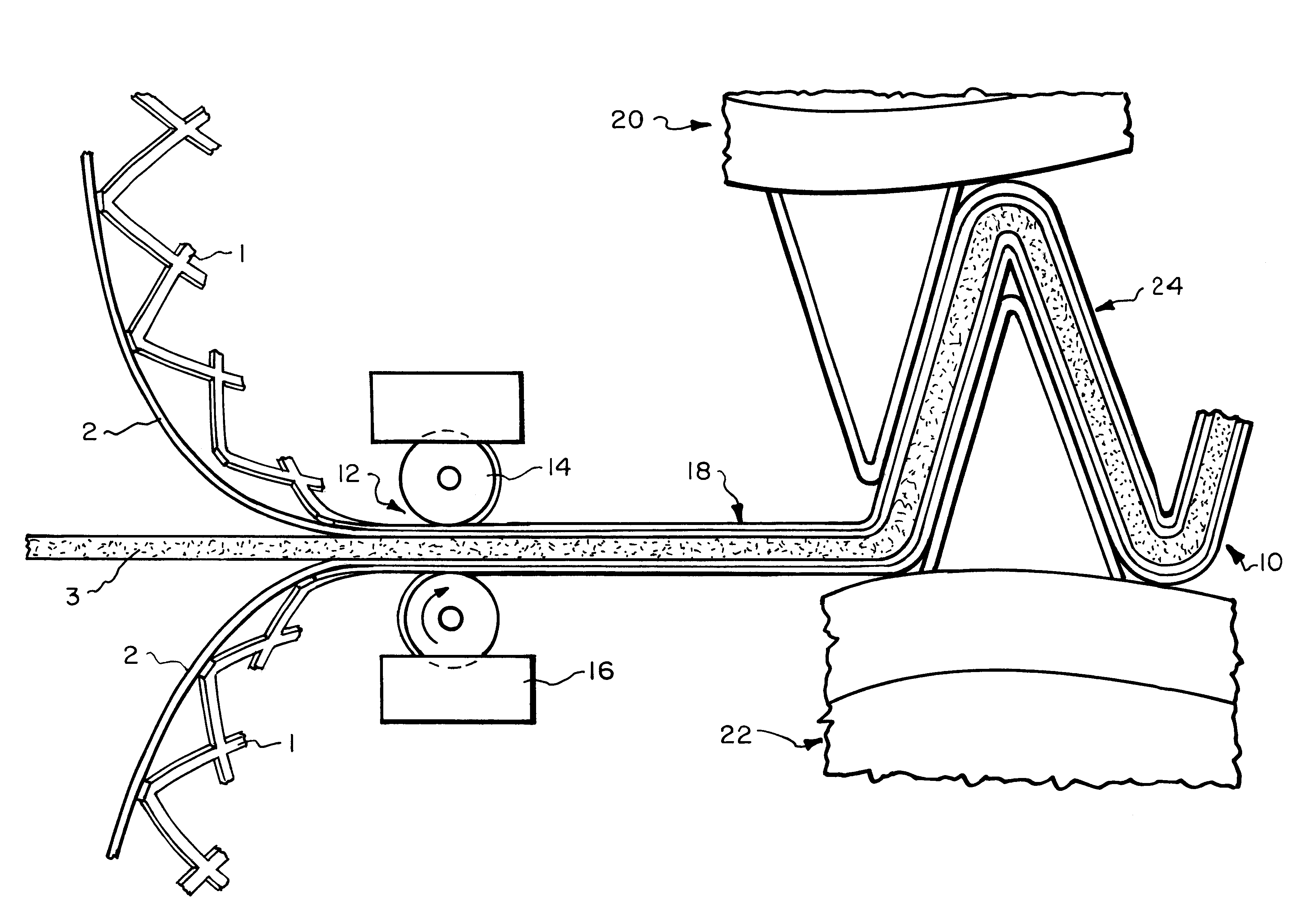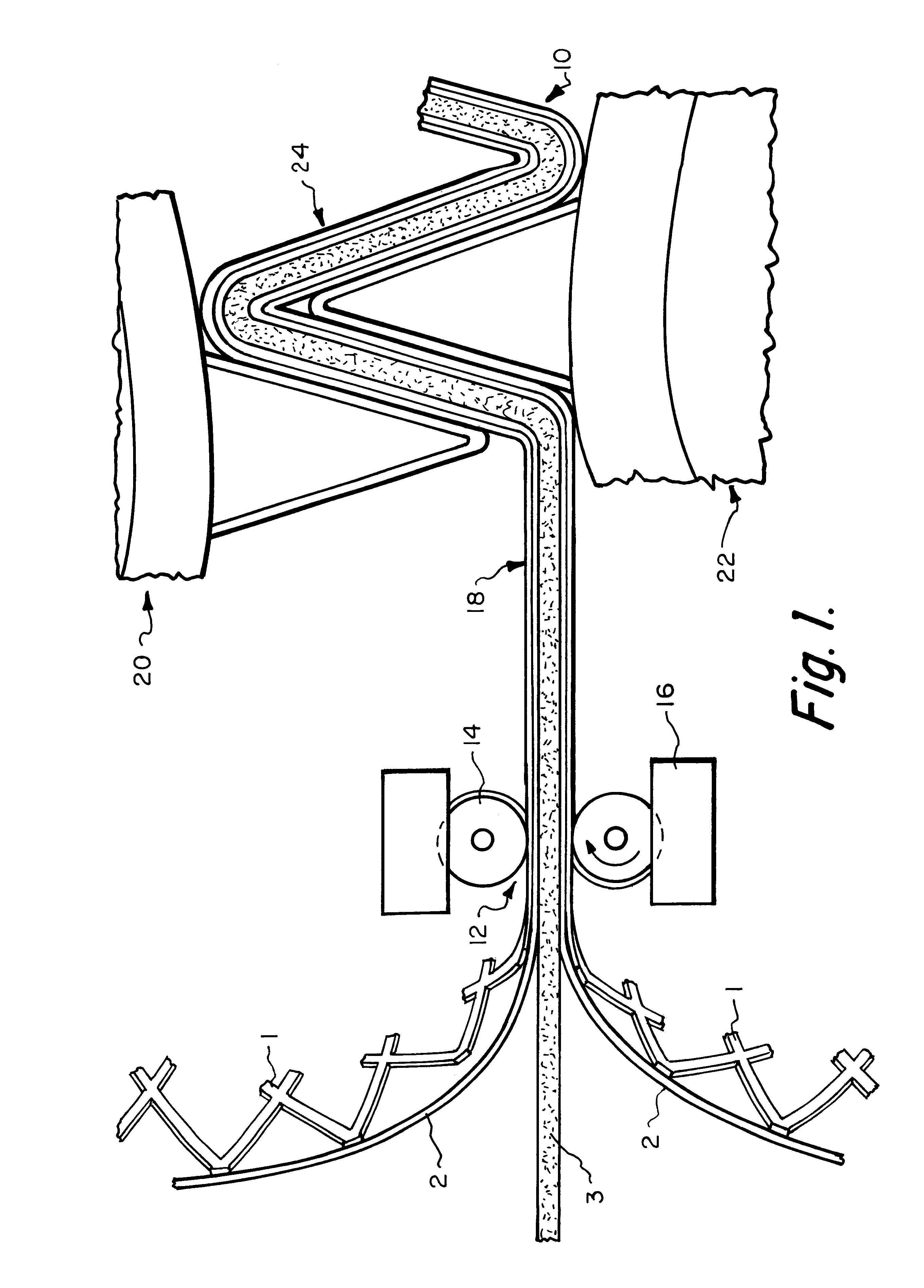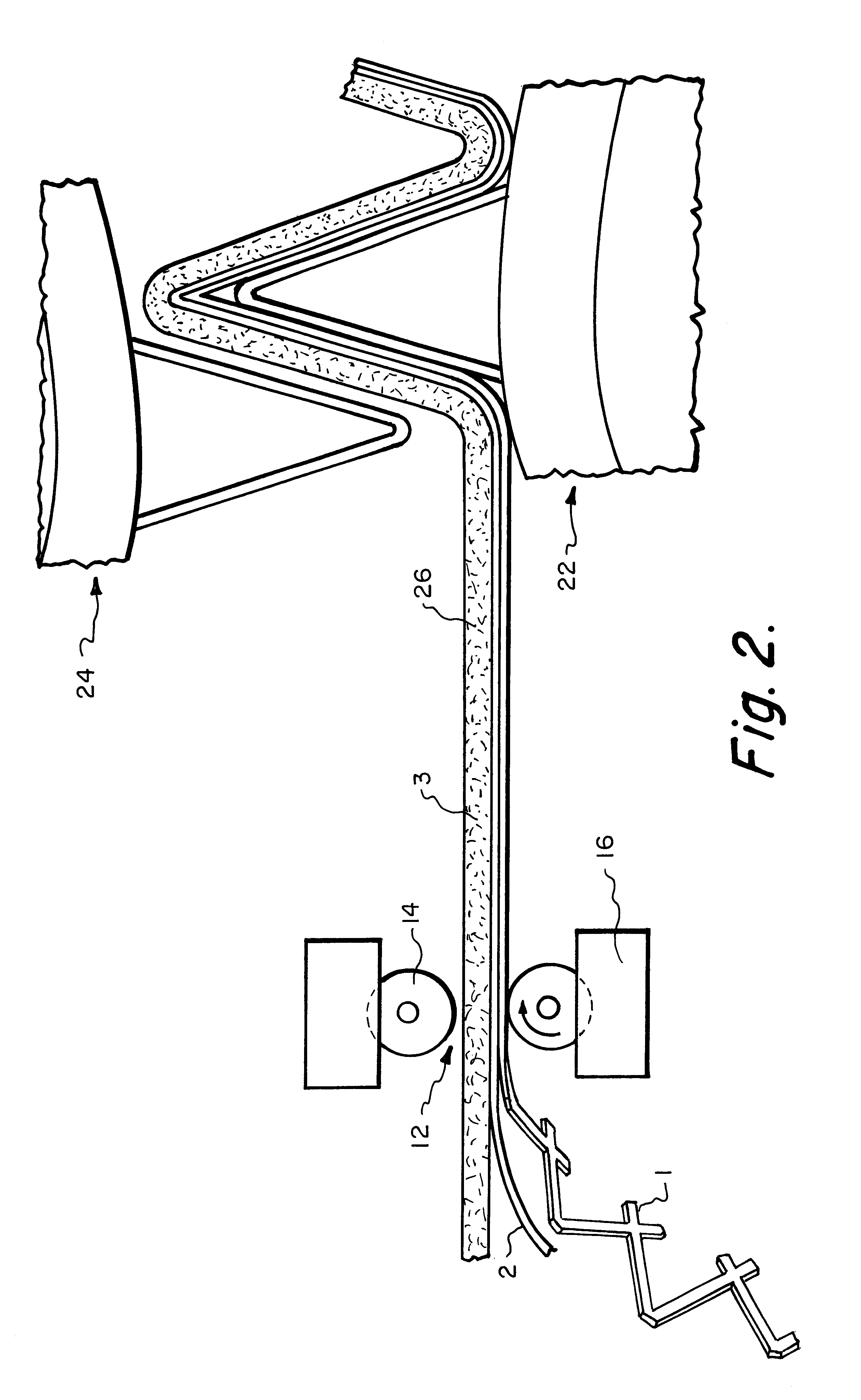High efficiency permanent air filter and method of manufacture
a filter and permanent technology, applied in the field of electrostatic filters, can solve the problems of low filtering efficiency, inefficiency of most current inlet air filters for heating and air conditioning systems in capturing small particles, and prior art filters are usually difficult to clean, so as to increase the mechanical particle capturing capacity of the central media, increase the surface area, and improve the effect of corrugation
- Summary
- Abstract
- Description
- Claims
- Application Information
AI Technical Summary
Benefits of technology
Problems solved by technology
Method used
Image
Examples
example 2
The central filter media of the filter of Example 1 was replaced with an acrylic bound polyester media formed of 20% of 2.25 denier and 75% of 15 denier polyester fiber blend having a density of 4 ounces per square yard. The corrugations were 12 corrugation per foot. The electrostatic polypropylene netting had a porosity of 1400 cfm and an initial resistance to air flow of 0.14 inches 2.g. The filter was rated at MERV 7.
example 3
The central media of the filter of Example 2 was replaced with a media containing a mixture of 25% 0.9 denier polyester fibers and 75% 3 denier polyester fibers having an overall weight of 2.3 ounces per square yard. The assembly was corrugated to contain 20 corrugations per foot. The initial resistance to air flow was 0.18 inches w.g. and a MERV 8 rating was achieved.
The radial pleat or corrugated air filter has an increased surface area over the prior air flat filter. Its ease of cleaning can be attributed to the filters ability to let the dust collect between the folds and not enter the filter media itself. The filter will have a larger dust holding capacity and will last longer between cleaning. As the filter collects dust, the filter efficiency will increase.
The filter assembly of the invention is suitable for replacement of filters used for filtering incoming air supplied to residential heating and air conditioning systems. The filters usually have a thickness from 0.5 inch to...
PUM
| Property | Measurement | Unit |
|---|---|---|
| thickness | aaaaa | aaaaa |
| thickness | aaaaa | aaaaa |
| angle | aaaaa | aaaaa |
Abstract
Description
Claims
Application Information
 Login to View More
Login to View More - R&D
- Intellectual Property
- Life Sciences
- Materials
- Tech Scout
- Unparalleled Data Quality
- Higher Quality Content
- 60% Fewer Hallucinations
Browse by: Latest US Patents, China's latest patents, Technical Efficacy Thesaurus, Application Domain, Technology Topic, Popular Technical Reports.
© 2025 PatSnap. All rights reserved.Legal|Privacy policy|Modern Slavery Act Transparency Statement|Sitemap|About US| Contact US: help@patsnap.com



